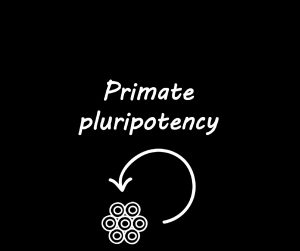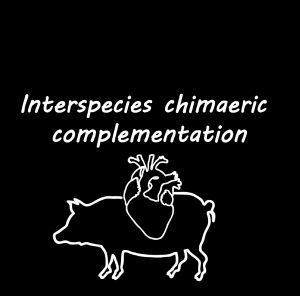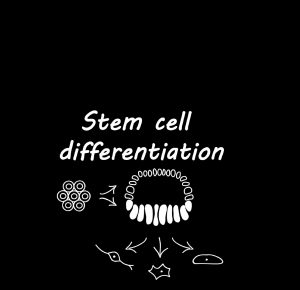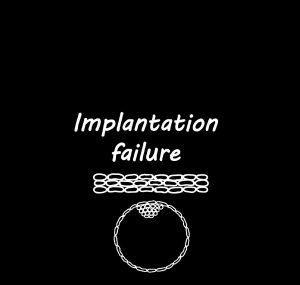“There will always be problems…
there will always be solutions!”(David Deutsch, Physicist)
Basic research is the foundation for innovative, cutting-edge biomedical applications. A deeper understanding of primate embryogenesis will bring us closer to the realisation of the following long-term visions…
 One of our central goals is to delineate the primate-specific features of pluripotency in the embryo. Better understanding of primate embryogenesis will allow enable us to capture authentic developmental states in vitro.
One of our central goals is to delineate the primate-specific features of pluripotency in the embryo. Better understanding of primate embryogenesis will allow enable us to capture authentic developmental states in vitro.
A prominent example includes the derivation of chimaera-competent embryonic stem cells (ESCs) in non-human primates – similar to what has been achieved in mouse by Martin and Evans in the 80s. This will open new avenues for sophisticated genetic engineering to create non-human primate models for preclinical research.
 An emerging application in biomedical research for chimaera-competent ESCs is the generation of human organs in farm animals (interspecies chimaeric complementation).
An emerging application in biomedical research for chimaera-competent ESCs is the generation of human organs in farm animals (interspecies chimaeric complementation).
Pioneering work in Prof. Hiromitsu Nakauchi’s laboratory has shown that rat ESCs are capable of filling the developmental niche of mouse Pdx1 (pancreatogenesis-disabled) null host embryos. This concept may be exploited to grow a human pancreas, liver or even heart in pigs for xenotransplantation. The recent generation of apancreatic pigs provides another key step towards clinical application. However, before human ESCs can be used, the saftey and specificity of this technique has to be assessed with non-human primate ESCs. The lack of chimaera-competent primate ESC represents the current bottleneck for these essential experiments.
 Robust differentiation of pluripotent stem cells relies on a precise spatiotemporal sequence of specification events. A homogenous population of a defined developmental starting point is essential to mimic embryonic patterning in vitro. Our goal is to bioengineer three dimensional synthetic embryos to allow differentiation of chimaera-competent primate ESCs in the context of extraembryonic tissues, similar to the embryo. In the future, this approach may provide a way of large-scale generation of foetal tissues for cell replacement therapies.
Robust differentiation of pluripotent stem cells relies on a precise spatiotemporal sequence of specification events. A homogenous population of a defined developmental starting point is essential to mimic embryonic patterning in vitro. Our goal is to bioengineer three dimensional synthetic embryos to allow differentiation of chimaera-competent primate ESCs in the context of extraembryonic tissues, similar to the embryo. In the future, this approach may provide a way of large-scale generation of foetal tissues for cell replacement therapies.
 Modelling primate implantation in a dish will increase our understanding of embryo implantation. We aim to use synthetic embryo-like structures in co-culture with endometrial maternal tissues to identify the essential molecular interactions for successful implantation.
Modelling primate implantation in a dish will increase our understanding of embryo implantation. We aim to use synthetic embryo-like structures in co-culture with endometrial maternal tissues to identify the essential molecular interactions for successful implantation.
In contrast to rodents, primates segregate amnion shortly after implantation and form an amniotic cavity. The recent discovery that primate germ cells originate from nascent amnion highlights the importance of this lineage decision. Our efforts to delineat the molecular signals operating in the primate embryo at the relevant stages may pave the way for efficient germ cell induction in vitro.
 Many cancers use developmental pathways to support their own growth and survival. A clearer understanding of germ cell specification in the early postimplantation primate embryo will be important to understand how germ cell tumours hijack these early developmental circuits.
Many cancers use developmental pathways to support their own growth and survival. A clearer understanding of germ cell specification in the early postimplantation primate embryo will be important to understand how germ cell tumours hijack these early developmental circuits.